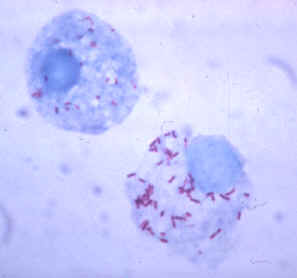Rocky Mountain spotted fever pathophysiology
|
Rocky Mountain spotted fever Microchapters |
|
Differentiating Rocky Mountain spotted fever from other Diseases |
|---|
|
Diagnosis |
|
Treatment |
|
Case Studies |
|
Rocky Mountain spotted fever pathophysiology On the Web |
|
American Roentgen Ray Society Images of Rocky Mountain spotted fever pathophysiology |
|
Directions to Hospitals Treating Rocky Mountain spotted fever |
|
Risk calculators and risk factors for Rocky Mountain spotted fever pathophysiology |
Editor-In-Chief: C. Michael Gibson, M.S., M.D. [1]
Overview
Pathophysiology & Etiology

Rocky Mountain spotted fever is caused by Rickettsia rickettsii, a small bacterium that grows inside the cells of its hosts. These bacteria range in size from 0.2 x 0.5 micrometers to 0.3 x 2.0 micrometers. They are difficult to see in tissues by using routine histologic stains and generally require the use of special staining methods.
In the human body, rickettsiae live and multiply primarily within cells that line small- to medium-sized blood vessels. Spotted fever group rickettsiae can grow in the cytoplasm or in the nucleus of the host cell. Once inside the host the rickettsiae multiply, resulting in damage and death to these cells. This causes blood to leak through tiny holes in vessel walls into adjacent tissues. This process causes the rash that is traditionally associated with Rocky Mountain spotted fever and also causes damage to organs and tissues.
Taxonomy
The genus Rickettsia is included in the bacterial tribe Rickettsieae, family Rickettsiaceae, and order Rickettsiales. This genus includes many other species of bacteria associated with human disease, including those in the spotted fever group and in the typhus group. More than 20 species are currently recognized in genus Rickettsia but not all are known to cause disease in humans. Other genotypes are also known but they have not been classified yet as valid species and new agents are being discovered in many areas of the world.